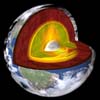| . |  |
. |
Washington - Sep 01, 2003 Researchers have discovered that total bromine in the lower atmosphere has been decreasing since 1998 and is now more than five percent below the peak reached that year. Bromine is one of the most active destroyers of the stratospheric ozone layer, which forms an invisible shield around the Earth, protecting it from the biologically damaging ultraviolet rays of the Sun. Stephen A. Montzka and colleagues from the National Oceanic and Atmospheric Administration's Climate Monitoring and Diagnostics Laboratory in Boulder, Colorado, attribute the decline of total bromine primarily to international restrictions on industrial production of methyl bromide. Their report will be published August 15 in the journal Geophysical Research Letters. "The decrease is driven by a large and rapid decline in methyl bromide, a brominated gas that is regulated internationally by the Montreal Protocol," said Montzka. The surprisingly large drop in atmospheric methyl bromide, about 13 percent since 1998, has more than offset the small increases still observed for bromine from fire-extinguishing agents known as halons. Bromine is about 50 times more efficient than chlorine at destroying stratospheric ozone. "This is welcome news for stratospheric ozone because it means that less bromine and chlorine have been entering the upper atmosphere [stratosphere], where the ozone layer resides, for a number of years now," said Montzka. Furthermore, while chlorine's decline in the lower atmosphere had been slowing in recent years, these new data suggest that the overall threat posed to stratospheric ozone from all halogenated gases continues to steadily diminish, Montzka said. Methyl bromide is produced industrially for use as a fumigant in agriculture and in the shipment of commercial goods. It is unique among ozone-depleting substances regulated by the Montreal Protocol, in that it also has substantial natural sources, including the oceans, wetlands, some plants, and burning vegetation. Global industrial production of methyl bromide has declined in recent years in response to restrictions outlined in the amended Montreal Protocol, say the researchers. The Montreal Protocol, which limits production of ozone-damaging compounds, was originally signed by 23 nations in 1987 and has been strengthened through revisions and amendments since then. Methyl bromide and halons together account for nearly all of the human-released bromine that reaches the stratosphere. The NOAA scientists were able to discern the reversal in the long-term upward trend for bromine based on their ground-based measurements of methyl bromide and halons over the past eight years at 10 stations around the globe, including Cape Grim, Tasmania; the South Pole; Mauna Loa, Hawaii; and Barrow, Alaska. The decrease in bromine is large compared to the decline documented earlier for chlorine. With this new result, the authors determined that overall ozone-depleting gases are declining faster than previously thought. International efforts to reduce industrial production of methyl bromide have had a noticeable impact on overall atmospheric levels of ozone-depleting substances, they say. This good news must be tempered, however, because bromine from halons is still increasing slowly. But, says Montzka, "the surprisingly large decline observed for methyl bromide now dominates the overall trend for bromine." Full recovery of the ozone layer is still expected to take several decades, provided atmospheric levels of both bromine and chlorine continue to drop. The researchers note that these encouraging trends could change. "Decreases in ozone-depleting substances are a direct result of international limits on production," said Montzka. "Without continued worldwide adherence to the restrictions outlined in the Protocol, these trends could slow and delay the recovery of stratospheric ozone." Related Links American Geophysical Union SpaceDaily Search SpaceDaily Subscribe To SpaceDaily Express
 Stockholm - Sep 01, 2003
Stockholm - Sep 01, 2003The core of the earth doesn't look the way it was expected to. Scientists at the Royal Institute of Technology in Stockholm, Sweden, KTH, can now show that iron, under extremely high pressure, such as that found in the inner earth, takes on unexpected properties, and this can be of importance in understanding the movements of the earth, such as, earthquakes. The results are being presented in the new issue of the British scientific journal Nature. |
|
| The content herein, unless otherwise known to be public domain, are Copyright 1995-2006 - SpaceDaily.AFP and UPI Wire Stories are copyright Agence France-Presse and United Press International. ESA PortalReports are copyright European Space Agency. All NASA sourced material is public domain. Additionalcopyrights may apply in whole or part to other bona fide parties. Advertising does not imply endorsement,agreement or approval of any opinions, statements or information provided by SpaceDaily on any Web page published or hosted by SpaceDaily. Privacy Statement |